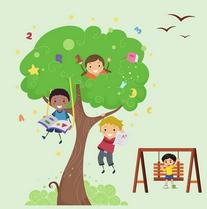
Play therapy is a technique used primarily for children and a way for a therapist to connect with their younger clients. While adults are able to articulate and express their emotions easier to their therapists, younger children may still struggle with this and by using play-a language that children are familiar with, therapists are able to gain insight into a child’s life.
By using what is familiar to a child, therapists are also able to gain trust with their client and create deeper connections. Through these connections that are made, there are some benefits that come with utilizing play therapy. Children start to learn to take more responsibility for their behaviors, develop coping strategies, create problem-solving skills, alleviate anxiety, and learn to fully experience and express feelings.
While some of you may still be wondering, how do we interpret children’s actions and behavior through the use of play? The use of toys and other objects in play therapy can be used to symbolize the emotions, feelings, and experiences that children are going through. Therapists are able to understand this by viewing how children interact with different types of toys and how their behavior may shift from each session. Children may use these toys to reenact their fears, anxieties, or even to problem solve.
Some common techniques used in play therapy are role-playing, storytelling, using puppets, dolls, action figures, musical play, and water/sand play. The benefit of play therapy is that it can be used on its own alongside other therapeutic interventions to reach the treatment goal the therapist has made. Although play therapy is more commonly used with younger clientele, this method of therapy can be beneficial for clients of all ages.
